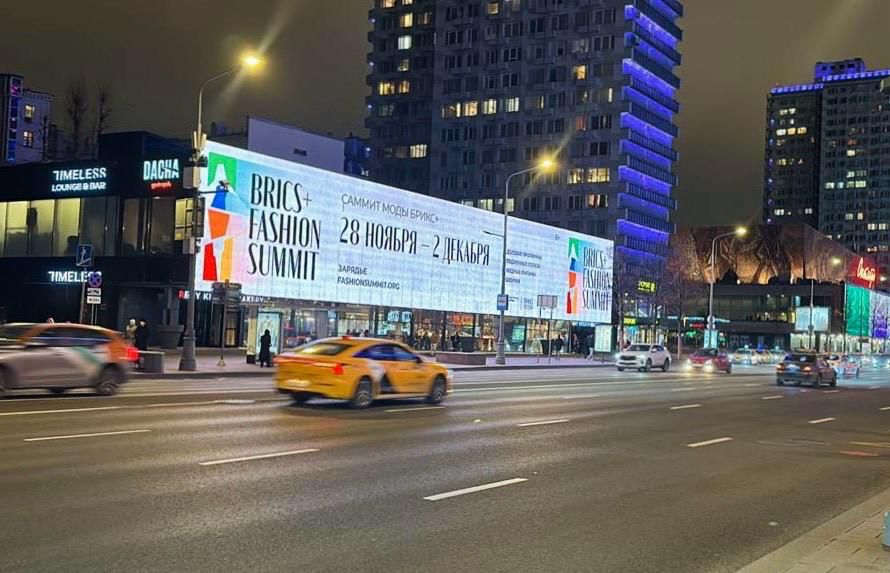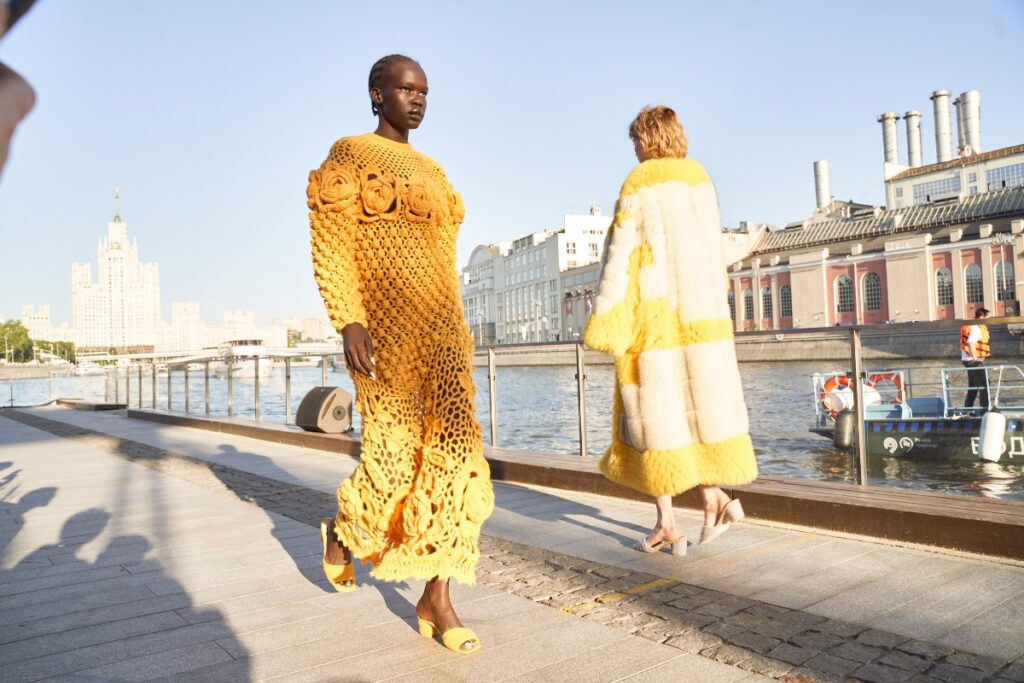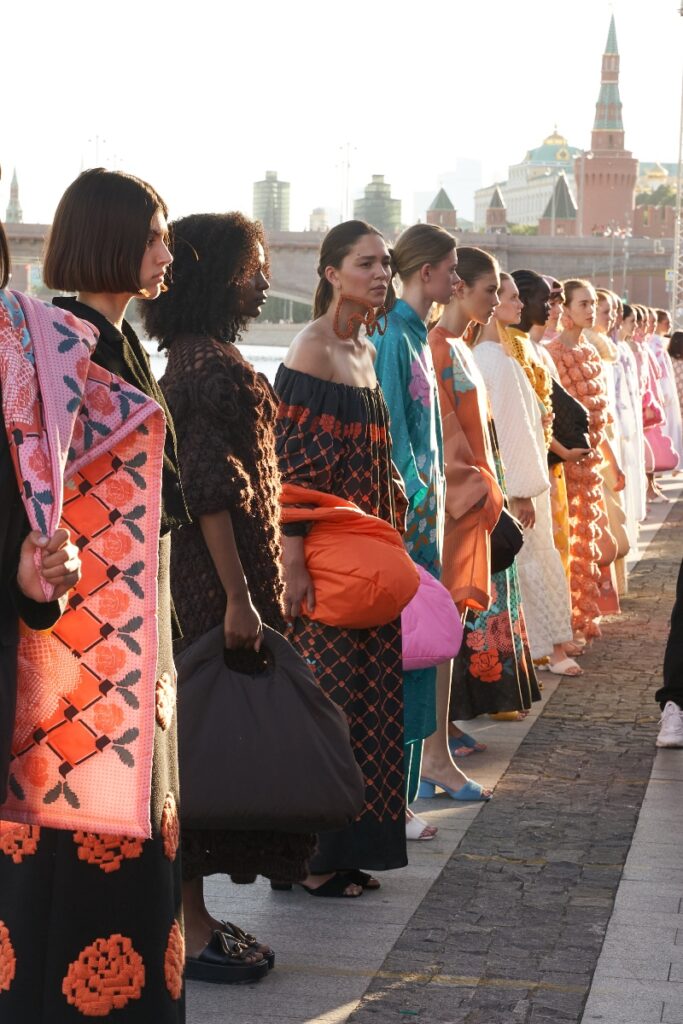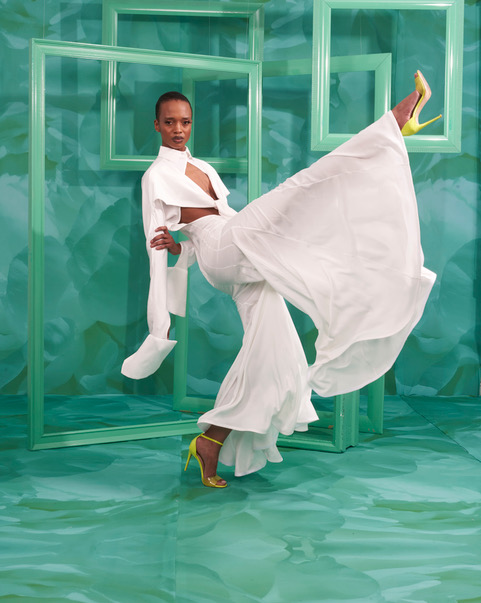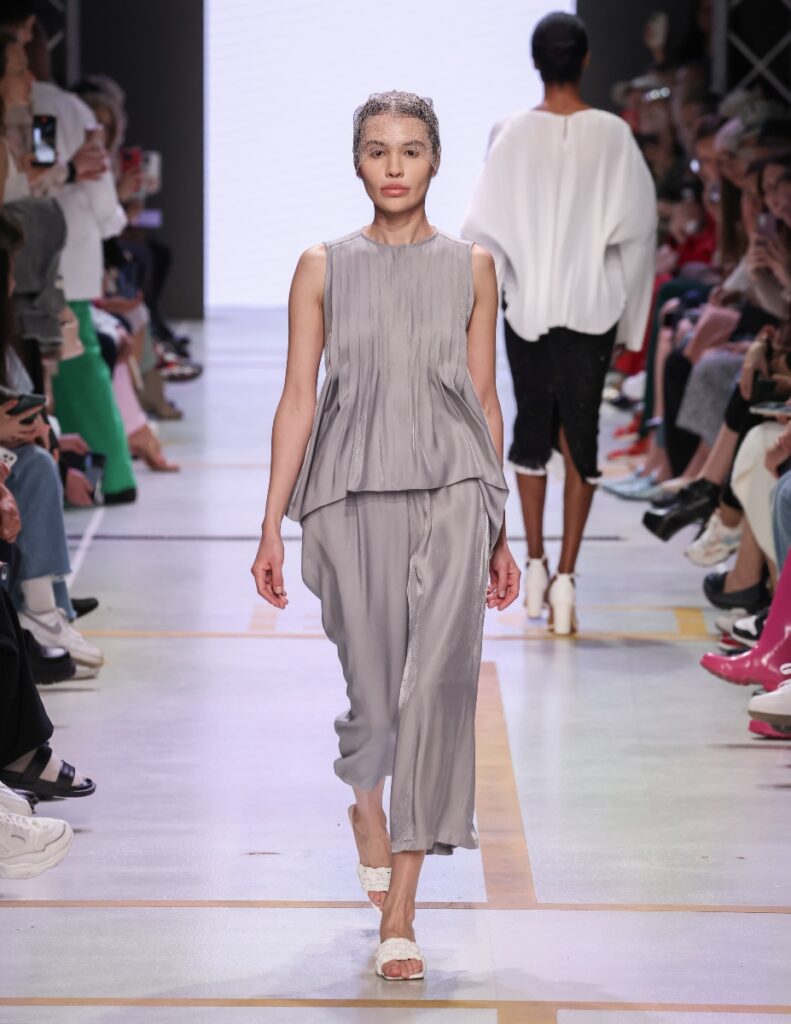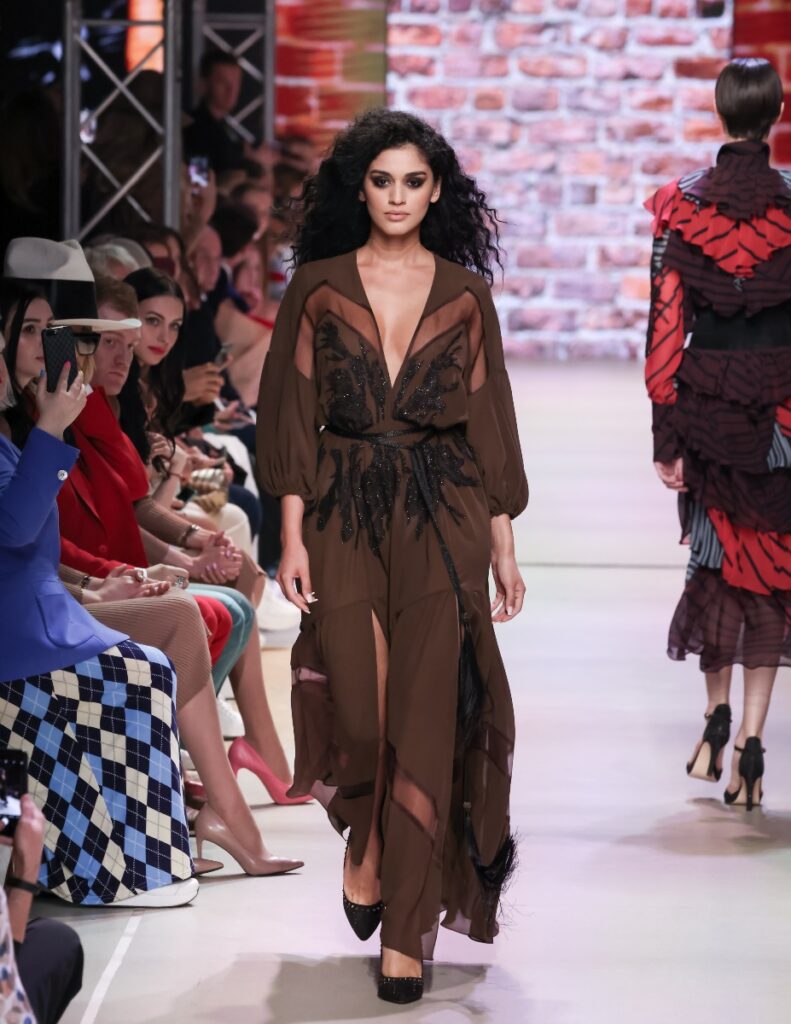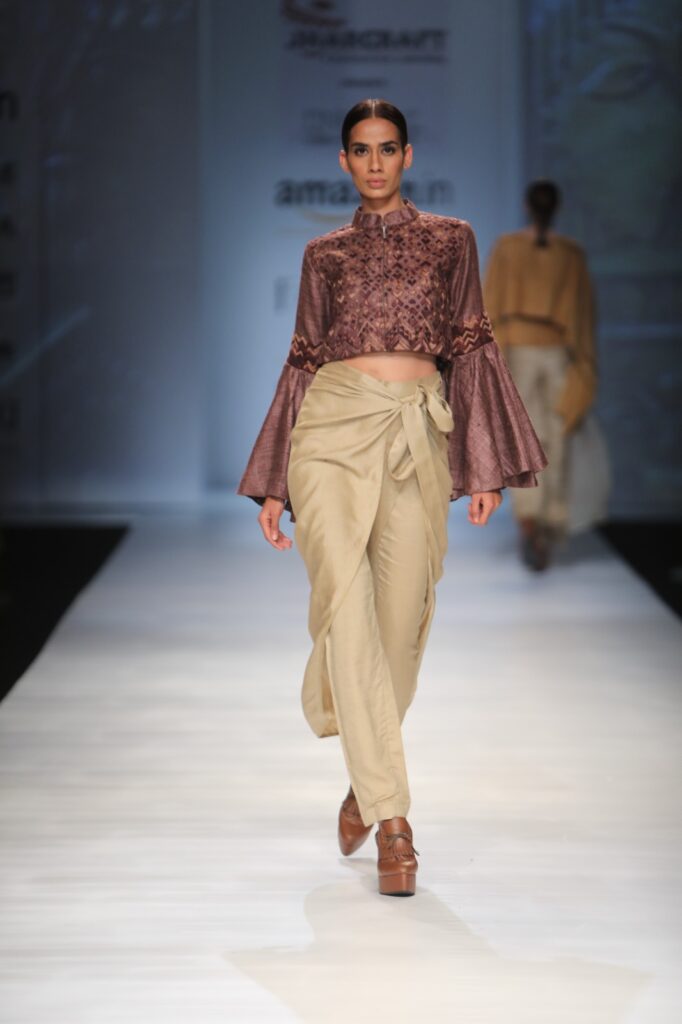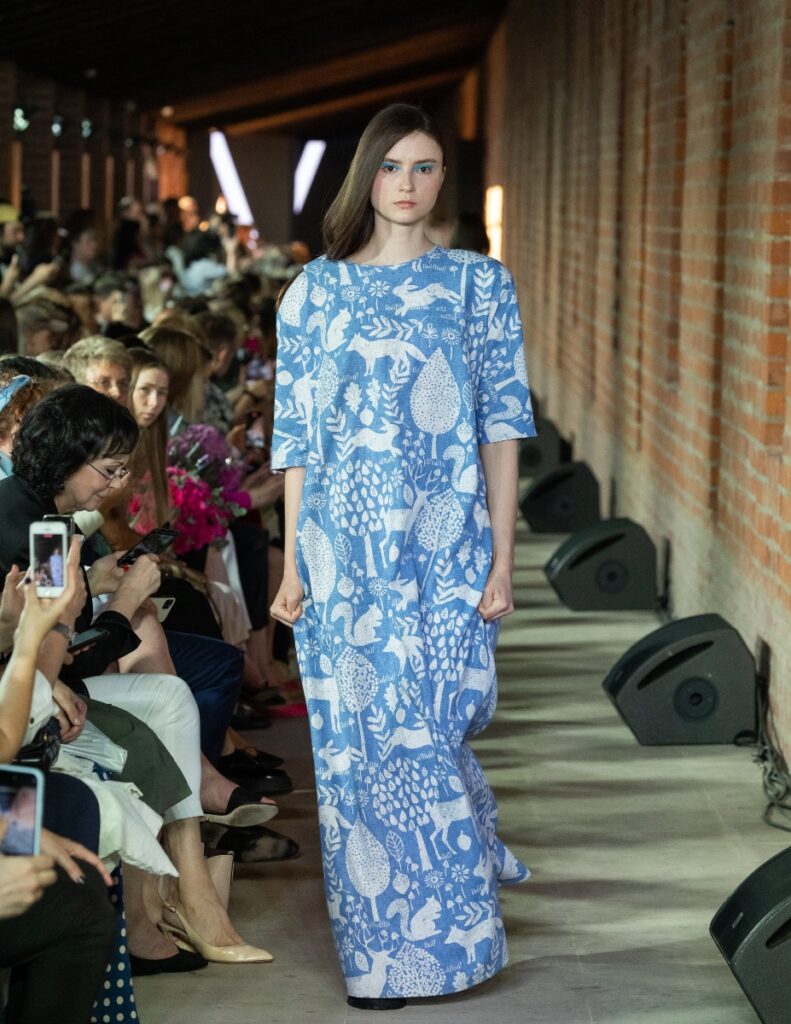With the highly anticipated BRICS+ Fashion Summit set to unfurl in Moscow, Africa, often described as the ‘sleeping giant’ of the fashion world, is poised to wake from its slumber. Africa’s presence at the event promises to be bold and unmissable, as delegations from almost two dozen nations, including Nigeria, South Africa, Namibia, Kenya, Botswana, Tanzania, Côte D’Ivoire, Egypt, Tunisia, and Morocco, prepare to descend upon the Russian capital.
It’s time for a global realignment
The upcoming BRICS+ Fashion Summit, set to take place from November 28th to December 2nd, promises a refreshing shift in global fashion discourse. An event of this caliber might be the much-needed impetus for the obscure role that BRICS— a formidable alliance of Brazil, Russia, India, China, and newly joined members like Egypt, Argentina, the United Arab Emirates, among others— currently plays in the international fashion scene.
For far too long, powerhouse nations like China and India have been relegated to function as mere manufacturing workshops for Western brands. Their vibrant cultural aesthetics and groundbreaking design innovations have been overshadowed by the ceaseless churn of fast-fashion assembly lines. Moreover, some African and Latin American countries have been reduced to depositories for the West’s discarded clothing, a problem so severe that it spurred countries like Rwanda and Kenya to impose bans on second-hand imports in recent years.
The European Union alone exports a startling 1.7 million tonnes of textile waste and used clothing, mostly to African countries. This cluttered landscape of castoffs on the African continent serves as a stark materialization of the imbalances within the global fashion industry.
Further complicating matters is the inordinate dominance of the U.S. and the E.U. in dictating fashion trends, fostering a one-sided conversation where developing nations are frequently relegated to the role of consumers, rather than creators.
The BRICS+ Fashion Summit, committed to the democratization of fashion, serves as a beacon of hope for change. It’s time for a global realignment— one where the rich tapestry of aesthetics from BRICS+ nations is not only acknowledged but celebrated, and where the needle of trendsetting is guided equally by all hands around the globe.
Redefining the Global Fashion: The Rise of Africa
In an industry long dominated by international brands, the landscape of fashion is shifting thanks to globalization and digitization. Social media platforms, e-commerce, and consumer movements championing diversity and inclusivity are paving the way for a new wave of fashion brands emerging from developing countries.
Africa, in particular, has distinguished itself as a hotbed of fresh talent. Among the most notable is Nigerian designer Amaka Osakwe, the creative force behind the esteemed Maki Oh label. Her designs have been donned by prominent figures such as Michelle Obama and Beyoncé. Fellow Nigerian designer Duro Olowu made his mark with a womenswear label launched in London, captivating discerning fashion enthusiasts like Uma Thurman and Solange Knowles. South Africa’s David Tlale, known for his impactful designs, rose to international prominence after showcasing his collection at the New York Fashion Week. He is also set to present his latest creations at the forthcoming BRICS+ Fashion Summit in Moscow.
While Nigeria and South Africa provide luminary designers, the African continent brimming with burgeoning talent is far from being monolithic. From Kenya to Tanzania, Malawi to Mali, and Egypt to Morocco, an evolving collection of audacious talents is redefining the African fashion narrative. The upcoming BRICS+ Fashion Summit is set to underscore this transformative wave.
Featured within the summit’s African lineup are refined designers like Côte D’Ivoire’s Kente Gentlemen and Zanzibar’s Doreen Mashika, who harmoniously interweaves her designs with rich Swahili traditions. Showcasing the proclivity for extravagance is Libya’s luxury brand Born In Exile, and Egypt’s detailed couture label Hany El Behairy, who is slated to orchestrate a special presentation. It promises to be an array of diverse, innovative talent that transcends geographical boundaries.
However, the BRICS+ Fashion Summit isn’t solely a platform for established designers. It aims to foster knowledge and nurture innovation among the next generation. Marey Caley, the founder of the Museum of Namibian Fashion, and Gregg Maragelis, dean of the esteemed Cape Town College of Fashion in South Africa, are set to conduct lectures. They will impart their vision and experience to a specially chosen group of Russian students and brand owners. This initiative in cross-cultural exchange promises to offer invaluable insights, primed to expand the creative horizons of future fashion luminaries.
This emergence of talent from developing countries is injecting new life into the fashion industry, emphasizing sustainable and ethically sourced fashion that reflects their cultural heritage and local artisanal prowess. The anticipated BRICS+ Fashion Summit is slated to host over 130 such brands from 25 developing countries and draw a crowd of over 250 delegates from 60 countries, representing more than two-thirds of the world’s population.
Democratization of Fashion
The crux of the summit conversation centers on the democratization of fashion — a paradigm shift empowering nascent talent and firepower to not just follow but establish global trends. Evidently, countries such as India, China, and nations across Africa are setting the fashion agenda.
Marshall Mutsamwira, director of Zimbabwe Fashion Week, voiced his perspective concerning the summit and the larger fashion landscape. “In Africa, local brands and cultural identity hold potent value. There’s an evident drive towards nurturing unique fashion identities, spotlighting the wide-ranging, rich textile traditions. The industry’s trajectory in Africa likely hinges on the local heritage appreciation and the rise of indigenous brands that mirror the continent’s distinct identity,” noted Mutsamwira.
The summit promises a grand show of global talent enriched by African influence. Among them is Priscilla Chigariro, founder of Zimbabwe Fashion Week, and Adama Amada Ndiaye, pioneering the Dakar Fashion Week. Their contribution exemplifies the diversity and inventiveness intrinsic to African fashion. Much more than creativity and fresh ideas, they bring a piece of their local heritage and culture to the international fashion stage.
The summit teases an impressively multicultural showcase. With a significant representation from Africa, it anticipates a stunning display of fashion innovation that goes beyond mere aesthetics.
In a remarkable departure from the norm, this marks the first time a fashion conference of such magnitude has dedicated such significant attention to African culture and the wealth of other cultures worldwide. This trailblazing summit sets a new standard for diversity and inclusion in the global fashion scene. Remarkably, this pioneering initiative is helmed by the Russians.
By embracing a rich tapestry of cultural influences, the event underscores the importance of broadening perspectives, and it signals a new age for the fashion industry. This ground-breaking summit is certain to inspire and inform future fashion events, as well as emphasize the need to maintain diversity and inclusion as core principles within the creative realm.
These designs are poised to make a substantial impact, establishing new trends, and revealing unique methodologies, particularly in the realm of sustainable fashion.
WATCH TOP VIDEOS FROM NIGERIAN TRIBUNE TV
- Let’s Talk About SELF-AWARENESS
- Is Your Confidence Mistaken for Pride? Let’s talk about it
- Is Etiquette About Perfection…Or Just Not Being Rude?
- Top Psychologist Reveal 3 Signs You’re Struggling With Imposter Syndrome
- Do You Pick Up Work-Related Calls at Midnight or Never? Let’s Talk About Boundaries

